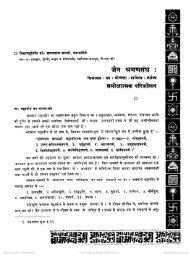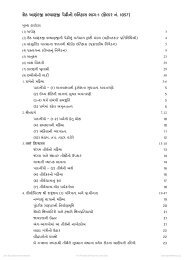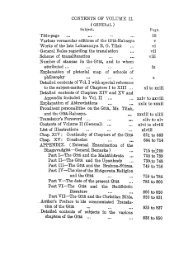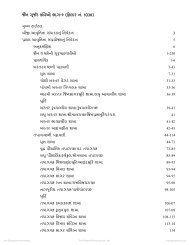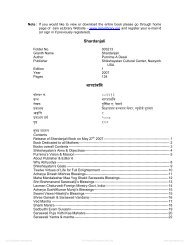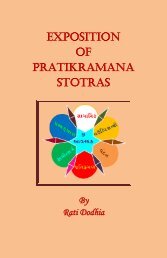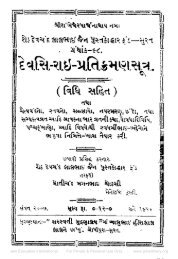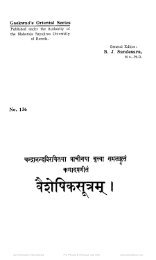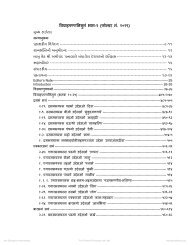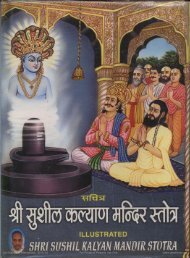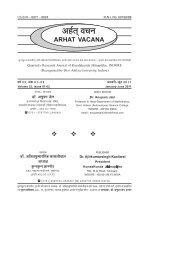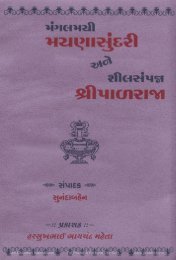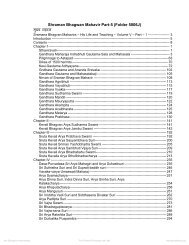Chapter - 08 Bon Po Religion - Jain Library
Chapter - 08 Bon Po Religion - Jain Library
Chapter - 08 Bon Po Religion - Jain Library
You also want an ePaper? Increase the reach of your titles
YUMPU automatically turns print PDFs into web optimized ePapers that Google loves.
Shri Ashtapad Maha Tirth - II<br />
Kinauri. Thus, it was not some artificial creation fabricated by the <strong>Bon</strong> <strong>Po</strong>'s in order to<br />
have an ancient source language corresponding to the Indian Sanskrit of the Buddhist<br />
scriptures. [20]<br />
Beginning with the reign of the second king of Tibet, Mutri Tsanpo, it is said that<br />
certain <strong>Bon</strong> <strong>Po</strong> texts, in particular the Father Tantras (pha rgyud), were brought from<br />
Zhang-Zhung to Central Tibet and translated into the Tibetan language. [21] Thus the<br />
<strong>Bon</strong> <strong>Po</strong>'s assert that Tibetan acquired a system of writing at this time, based on the<br />
sMar-yig script used in Zhang-Zhung which would, therefore, have been ancestral to<br />
the dbus-med script now often used for composing Tibetan manuscripts, especially<br />
among the <strong>Bon</strong> <strong>Po</strong>'s. [22] The <strong>Bon</strong> <strong>Po</strong>'s subsequently experienced two persecutions in<br />
Central Tibet, the first under the eighth king of Tibet, Drigum Tsanpo, and later the<br />
second under the great Buddhist king of Tibet, Trisong Detsan in the eighth century<br />
of our era. According to the tradition, on both occasions, the persecuted <strong>Bon</strong> <strong>Po</strong> sages<br />
concealed their books in various places in Tibet and adjacent regions such as Bhutan.<br />
These caches of texts were rediscovered beginning in the tenth century. Thus they are<br />
known as rediscovered texts or as "hidden treasures" (gter-ma). [23] Certain other texts<br />
were never concealed, but remained in circulation and were passed down from the time<br />
of the eighth century in a continuous lineage. These are known as snyan-rgyud, literally<br />
"oral transmission", even though they are usually said to have existed as written texts<br />
even from the early period. One example of such an "oral tradition" is the Zhang-Zhung<br />
snyan-rgyud, which, in the eighth century, the master Tapihritsa gave permission to<br />
his disciple Gyerpungpa to write down in the form of his pithy secret oral instructions<br />
(man-ngag, Skt. upadesha). Or else, the texts were dictated during the course of ecstatic<br />
visions or altered states of consciousness by certain ancient sages or certain deities to<br />
Lamas who lived in later centuries. One such example of this was the famous lengthy<br />
hagiography of Tonpa Shenrab known as the gZi-brjid, dictated to Lodan Nyingpo<br />
(bLoldan snying-po, b.1360) by certain mountain spirits. This classification is rather<br />
similar to the Nyingmapa classification of its scriptures into bka'-ma and gter-ma. [24]<br />
This form of Old <strong>Bon</strong> flourished in Western and Central Tibet down to our own day.<br />
The teachings of <strong>Bon</strong> revealed by Tonpa Shenrab are classified differently in the three<br />
traditional hagiographical accounts of his life. In general, Tonpa Shenrab was said to<br />
have expounded <strong>Bon</strong> in three cycles of teachings:<br />
I. The Nine Successive Vehicles to Enlightenment (theg-pa rim dgu);<br />
II. The Four <strong>Po</strong>rtals of <strong>Bon</strong> and the fifth which is the Treasury (sgo bzhi mdzod<br />
Inga); and<br />
III. The Three Cycles of Precepts that are Outer, Inner, and Secret (bka’ phyi nang<br />
gsang skor gsum).<br />
These Nine Ways or Nine Successive Vehicles to Enlightenment are delineated according to three<br />
different systems of hidden treasure texts (gter-ma) that were put into concealment during the<br />
earlier persecutions of <strong>Bon</strong> and were rediscovered in later centuries. These treasure systems are<br />
designated according to the locations where the hidden treasure texts were discovered.<br />
The <strong>Bon</strong> <strong>Po</strong> Traditions of Dzogchen<br />
392



